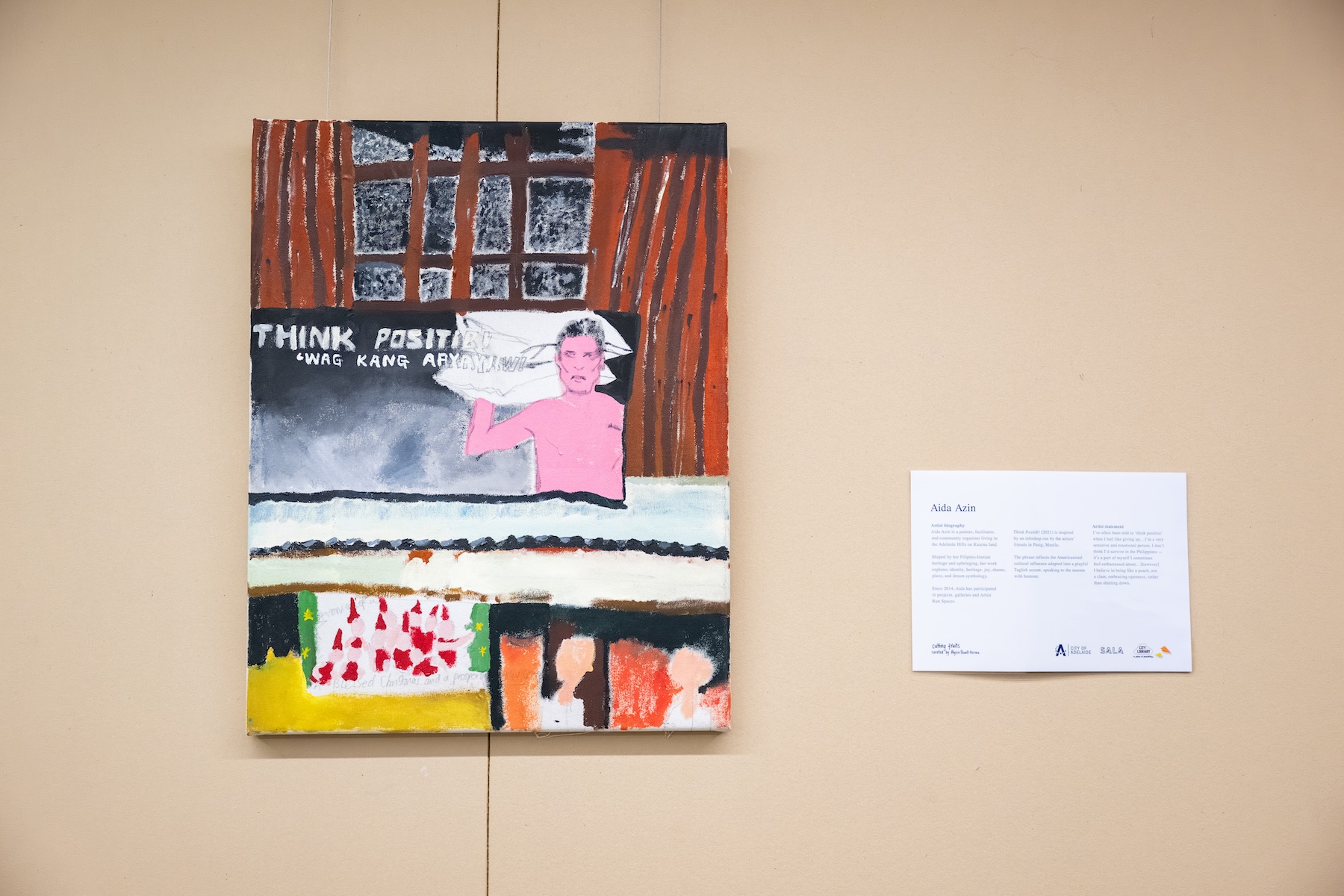‘Unspoken love’: Cutting Fruits shares narratives of resilience and community
With a practice centred in bayanihan – acting within a framework that centres community – this exhibition from first-time curator Alyssa Powell-Ascura does just that.

Developed through the City of Adelaide’s Emerging Curator program, Alyssa Powell-Ascura has brought together a series of local and interstate-based artists with connections to South Australia – a rare move for a SALA Festival exhibition – to explore themes of nostalgia, resilience and intimacy among First Nations, Asian Pacific voices.
Cutting Fruits explore themes of nostalgia, resilience, and intimacy, recognising the continuing relationships that pre-date colonisation, and cultural heritages that still shape our lives within contemporary Australia.
The title is inspired by Powell-Ascura’s own cultural experiences growing up. The simple act of her parents cutting fruit was a gesture of unspoken love and a symbol that individuals who identify within the Asian diaspora often experience.
As South Australia’s largest art festival, SALA often uses unconventional sites. The very place in which Cutting Fruits is held, the Adelaide City Library overlooking Rundle Mall, is a hub for community. Libraries are seen as a third space, a place that is separate from your home and work that centres conversation and exchange as the main activities, and allows the public to observe and share space. In libraries we can find the space to sit with ideas, let them gather weight, and be fleshed out, or carry out some last-minute research before a big deadline.

You might like
In Cutting Fruits, it asks the question “how does love, identity and culture collide in contemporary times?”
As you enter the library, Powell-Ascura has carefully curated this conversation with each artist. The curatorial intention of Cutting Fruits was to expand the conversation around love, rather than a concept rooted in the artist’s ethnic identities. The exhibition showcases how works by First Nations and Asian artists can be critically important without being reduced to narratives around identity politics.
Alyssa Powell-Ascura involves elements of community sourcing. In her work Tambay sa Bahay ni Lola (Hanging out at Grandma’s House), 2025, the curtain is brought from palengke, a community wet market in the Phillipines, and sent over by Alyssa’s uncles; the empty flour bag from her childhood friends local family bakery in Cavite, the place in which Alyssa’s maternal bloodline is connected to; and plastic chairs on loan from Abang Abang Indonesian Eatery.
Powell-Ascura’s other work Cerulean Polyphony, 2024, is a multi-functional sheet developed under the Mparntwe sun and is highly encouraged to be borrowed, adding to its already embedded energies. These elements visually speak to the collective nurturing of conceptualising and piecing together of visual identity and language.
Subscribe for updates
As you begin to walk your way throughout the library, the works are situated at the entrance of each meeting room or placed with you in the space – as if the art comes to meet you.
You meet Aida Azin’s painting, which references an ‘infoshop’ run by the artist’s friends in Pasig, Manila, reflecting the cultural influence and Americanised playful “Taglish” accent, and speaking to the importance of community with humour and vulnerability. Dominic Guerrera writes a love letter to First Nations manhood, that it is ‘tough tender, loving and stern’, displaying the true beauty of Blak men.

Wee Shiang Tay’s colourful ceramics have been created to show how her family in Malaysia take care of her during her studies on Kaurna Yarta. Phuong Ngo expresses the desire to understand the point of his parents’ freedom, which in turn is the freedom the artist was born into. Chris Siu’s striking collection of black and white photographs identify grief and longing, navigating the diasporic experience.
Also included in Cutting Fruits are artworks from Ali Gumillya Baker, Yusuf Ali Hayat and Sonya Rankine, which have appear on loan from the City of Adelaide’s Contemporary Art Collection.
Cutting Fruits offers another example of how one’s narrative expands identity, colliding moments of love that may be overlooked. Bringing these artworks to the people invites a moment of pause, of being present, taking time for yourself, and embracing resilience – before the rush of what you might have due.
Cutting Fruits is developed through the City of Adelaide Emerging Curator Program and is on display until September 21st 2025.
Jayda Wilson is Gugada and Wirangu artist and writer with Thai ancestry based on Kaurna Yarta, Adelaide, and the latest recipient of the Create SA and InReview First Nations Arts Writing Mentorship. Jayda is working with mentor K.A. Ren Wyld, an award-winning author and critic of Martu descent based on Kaurna Yerta, to write a series of articles for publication in InReview

